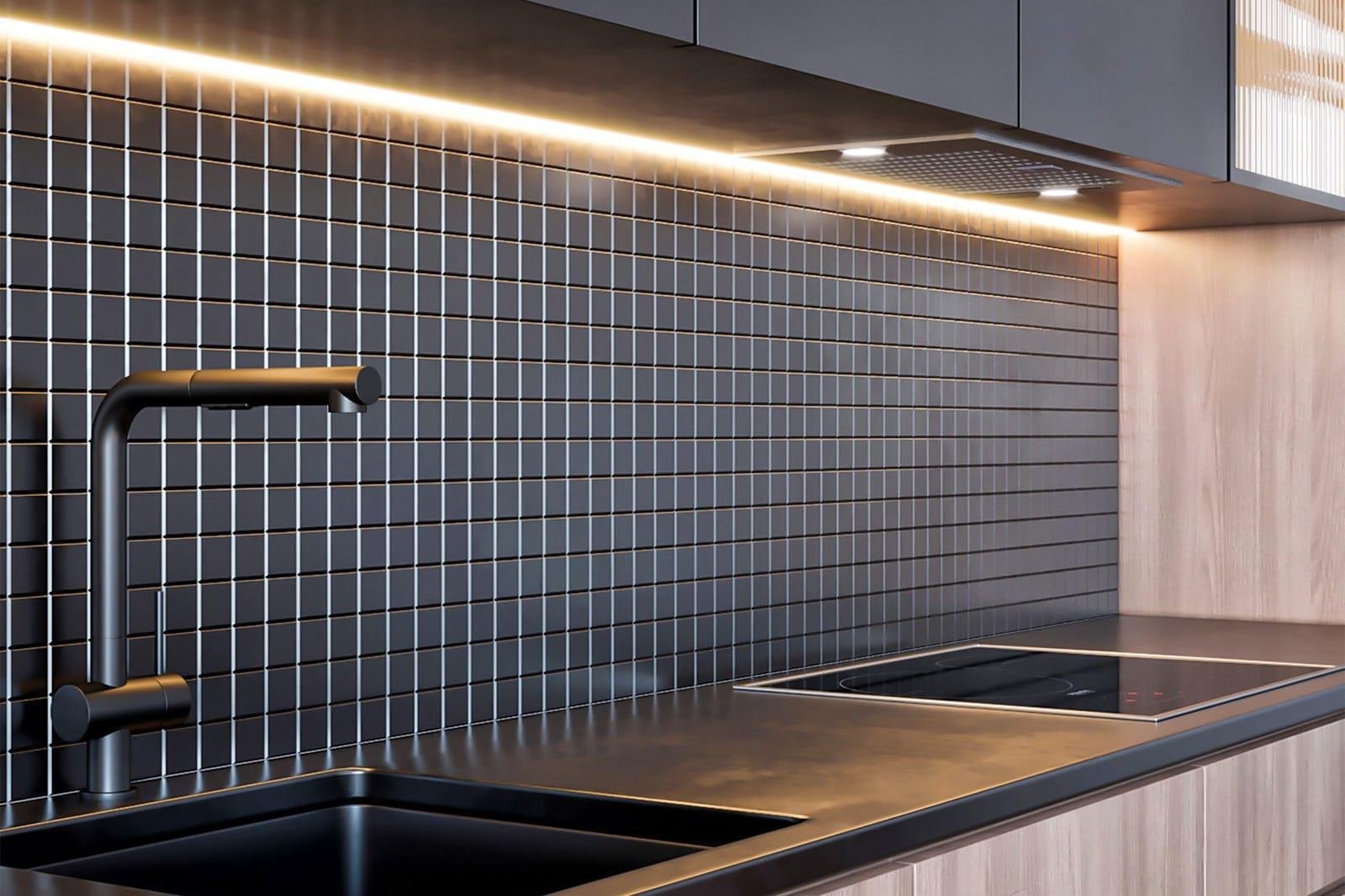In the realm of kitchen design, every element plays a pivotal role in shaping the space's functionality and aesthetic appeal. Among these, splashbacks stand out as both a practical necessity and a design statement. They protect walls from spills and splatters while offering an opportunity to infuse personality and style into the kitchen. This article delves into the multifaceted world of splashbacks, exploring their benefits, material options, design trends, and tips for selecting the perfect one for your kitchen.
The Functional Importance of Splashbacks
At their core, splashbacks serve a protective function. Positioned behind cooktops and sinks, they shield walls from water, grease, and food splashes, which can cause staining and damage over time. Beyond protection, splashbacks contribute to the kitchen's hygiene by providing a surface that's easier to clean compared to painted walls or wallpaper. Materials like glass, tiles, and stainless steel can be wiped down effortlessly, ensuring a sanitary cooking environment.
Material Choices: Balancing Aesthetics and Practicality
Selecting the right material for your splashback involves considering both visual appeal and functional requirements. Here are some popular options:
-
Glass: Known for its sleek, modern look, glass splashbacks are available in a myriad of colors and finishes. They are non-porous, making them resistant to stains and easy to clean. Additionally, glass can reflect light, enhancing the sense of space in smaller kitchens.
-
Tiles: Ceramic and porcelain tiles offer versatility in design, with countless patterns, colors, and textures available. They can suit various styles, from traditional to contemporary. However, grout lines require regular maintenance to prevent discoloration.
-
Stainless Steel: Favored in professional kitchens, stainless steel is durable, heat-resistant, and hygienic. Its industrial aesthetic complements modern kitchen designs.
-
Stone: Natural stones like granite and marble provide a luxurious touch. Each slab has unique veining, adding character to the kitchen. While stunning, stone requires sealing to prevent staining.
-
Acrylic: A budget-friendly alternative to glass, acrylic splashbacks are lightweight and easy to install. They come in various colors and can mimic the appearance of more expensive materials.
Design Trends: Making a Statement
Splashbacks offer a canvas to express creativity and align with current design trends:
-
Bold Colors and Patterns: Vibrant hues and intricate patterns can transform a splashback into a focal point. Think geometric designs, Moroccan tiles, or bold color blocks that contrast with neutral cabinetry.
-
Extended Splashbacks: Running the splashback material from the countertop to the ceiling creates a seamless look and adds height to the space. This approach works well with materials like glass or large-format tiles.
-
Mirror Finishes: Mirrored splashbacks can make a kitchen appear larger and brighter by reflecting light. They pair well with minimalist designs and can add a touch of glamour.
-
Textured Surfaces: Materials with tactile finishes, such as textured tiles or embossed metals, add depth and interest to the kitchen.
Customization and Personal Expression
Personalizing your splashback allows you to infuse your kitchen with individuality:
-
Printed Glass: Custom images or patterns can be printed onto glass splashbacks, ranging from abstract designs to personal photographs.
-
Mosaic Tiles: Creating a mosaic allows for a unique design, combining different colors and shapes to form a cohesive artwork.
-
Chalkboard Paint: Applying chalkboard paint to a section of the wall can serve as a functional splashback and a space for notes or recipes.
Installation Considerations
Proper installation ensures the longevity and effectiveness of your splashback:
-
Surface Preparation: Walls should be clean, dry, and smooth before installation. Any imperfections can affect the adhesion and appearance of the splashback.
-
Professional Installation: While DIY installation is possible for some materials, hiring a professional ensures precision, especially for materials like glass or stone that require exact measurements and cuts.
-
Sealing: Materials like natural stone or tiles with grout lines need sealing to prevent moisture penetration and staining.
Maintenance and Longevity
Maintaining your splashback preserves its appearance and functionality:
-
Regular Cleaning: Use appropriate cleaners for the material. For instance, glass cleaners for glass splashbacks and mild detergents for tiles.
-
Avoid Abrasives: Harsh scrubbing pads can scratch surfaces like acrylic or polished stone. Opt for soft cloths or sponges.
-
Inspect Seals: Periodically check the seals around the edges to ensure they remain intact, preventing moisture ingress.
Environmental Considerations
For eco-conscious homeowners, consider the environmental impact of your splashback choice:
-
Recycled Materials: Some glass and tile options are made from recycled materials, reducing environmental footprint.
-
Longevity: Durable materials that don't require frequent replacement contribute to sustainability.
-
Low-VOC Adhesives: Using adhesives with low volatile organic compounds minimizes indoor air pollution.
Cost Implications
Budgeting for a splashback involves considering material, installation, and maintenance costs:
-
Material Costs: Prices vary widely, with acrylic and ceramic tiles on the lower end, and natural stone or custom glass on the higher end.
-
Installation Fees: Professional installation adds to the cost but ensures quality and durability.
-
Long-Term Value: Investing in a high-quality splashback can enhance property value and reduce future renovation needs.
Conclusion
Splashbacks are more than just protective barriers in the kitchen; they are integral design elements that marry form and function. By carefully selecting materials, embracing design trends, and considering practical aspects like maintenance and cost, you can choose a splashback that not only safeguards your kitchen walls but also elevates the overall aesthetic. Whether you opt for the sleekness of glass, the charm of tiles, or the luxury of stone, your splashback can reflect your personal style and enhance your culinary space.
